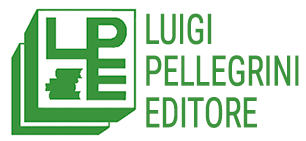The fourth grade teacher of a school in Pordenone asked and obtained from the family of a student who came to class wearing the niqab (the covering veil that leaves only the eyes uncovered) that their daughter would return to school the next day without this outfit. . In fact, the little girl, born in Italy to Muslim parents of Nigerian origin, continued to attend class with her face uncovered.
The fact immediately gave rise to several controversies, which were somewhat aligned, and offers the inspiration for some reflections.
The comments on the story came essentially from the political context. The vice mayor and councilor for education of the municipality of Pordenone recalled the existence of similar precedents in the same school and together with other political exponents, in a bipartisan manner, claimed the protection of human dignity and female emancipation, underlining the need to promote the inclusion of immigrant communities.
There were also comments from other political leaders who announced initiatives to propose a ban on the full veil in schools and public places, similar to what has already happened in the Arab Republic of Egypt (https://www.rivistadirittoereligioni.com/ newsegitto-il-governo-egiziano-vieta-luso-del-niqab-nelle-ispetti-educative-vasco-fronzoni/), in Belgium (https://www.rivistadirittoereligioni.com/1-2010-legislazione-e-giurisprudenza -internazionale-pdf/) and in secular France, although in relation to the abaya (https://www.rivistadirittoereligioni.com/newsfrancia-divieto-dindossare-labaya-a-scuola/).
The city’s school directors, who for years have been committed to promoting the integration of pupils and respect for children’s rights, have taken note of the situation without making any observations. On the other hand, a critical observation on the teacher’s work was raised by the director of the regional school office, arguing that the teacher should reconsider her activism, since there are no specific rules or laws that prevent entry to school with the veil. On this point, the regional director probably did not consider the current legislative framework, which although aimed at protecting public order, prohibits any clothing that makes recognition of the person difficult, both in a public place and open to the public one.
Having reported the comments, the case also allows for a brief analysis, since it raises questions about the management of cultural and religious identity in the school context and the need to find a balance between respect for diversity and the preservation of common values, for social inclusion and from the perspective of the secularism of the State.
Furthermore, despite the presence of dissonant doctrinal voices that consider the use of the veil prescribed on a juridical basis, it should be noted that in the Shari’a there is no explicit and irrefutable attestation regarding the obligation or even just the opportunity for women to wear it, if not limited to the moment of prayer. In any case, wearing the veil today constitutes the expression of a Muslim identity, even if consecrated by cultural tradition rather than religious tradition. In fact, this garment - which was born well before Islam as a common custom throughout the Mediterranean area as early as the 4th century BC. and as a distinctive trait of women of the wealthy class and of noble descent - has become in its various guises a characteristic sign of Muslim women, not only in countries with an Islamic majority but also in the diaspora.
However, despite the different shapes and colors and the different perceptions regarding its obligatory nature, there is an absolute convergence on the ratio of use, which concerns modesty and the opportunity to not attract men’s sexual attention to women.
Therefore, the news episode appears to be the result of a misunderstanding, since that type of headgear should certainly not be worn in primary school. Imposing it on such a small child it is indeed indicative of an error of interpretation on the part of the parents, if not of a real and precisely religious illiteracy, as moreover noted by some members of the Islamic community of Pordenone.
Vasco Fronzoni
Source: https://www.pordenonetoday.it/cronaca/bambina-10-anni-niqab-scuola-elementare.html


